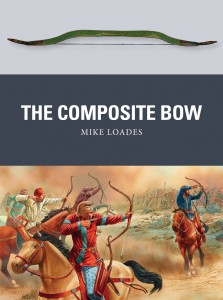- Home
- Director
- Writer / Author
- Host/Presenter
- Historical Consultant
- Interviewee
- Action Arranger
- Narrator
- Horse Archer
 This book on the composite bow includes a typology of the principle forms this shapely bow has taken. It details the manufacturing process, considers thumb-ring shooting styles and draws on accounts for the composite bow’s use in a variety of cultures. There is also an assessment of the bow’s effectiveness.
This book on the composite bow includes a typology of the principle forms this shapely bow has taken. It details the manufacturing process, considers thumb-ring shooting styles and draws on accounts for the composite bow’s use in a variety of cultures. There is also an assessment of the bow’s effectiveness.
Both infantry- and horse-archer techniques and practices are discussed, though there is an emphasis on the horse-archer for it was in his hands that the composite bow achieved the greatest renown.
“The composite bow was made from a combination of horn, sinew, wood and various animal glues. It manifested in a variety of recurve designs and was adopted by a staggering diversity of cultures, from nomadic tribal peoples such as the Huns, Turks and Mongols, to mighty empires such as the Romans, Persians and Chinese.
Offering high power and portability, the composite bow was especially effective in the hands of the horse-archer, though it was also used by infantry in open battle and as a siege weapon. More recently, the traditional technology of the composite bow has led directly to the development of modern sporting bows made of substitute composite materials and recurve designs.
In this important study, Mike Loades, an expert on historical archery, tells the story of this extraordinary piece of military hardware: how it was made and how various cultures developed differing tactics for using it. He explains why the composite bow achieved such stunning successes and how it endured as a weapon of choice for thousands of years.”